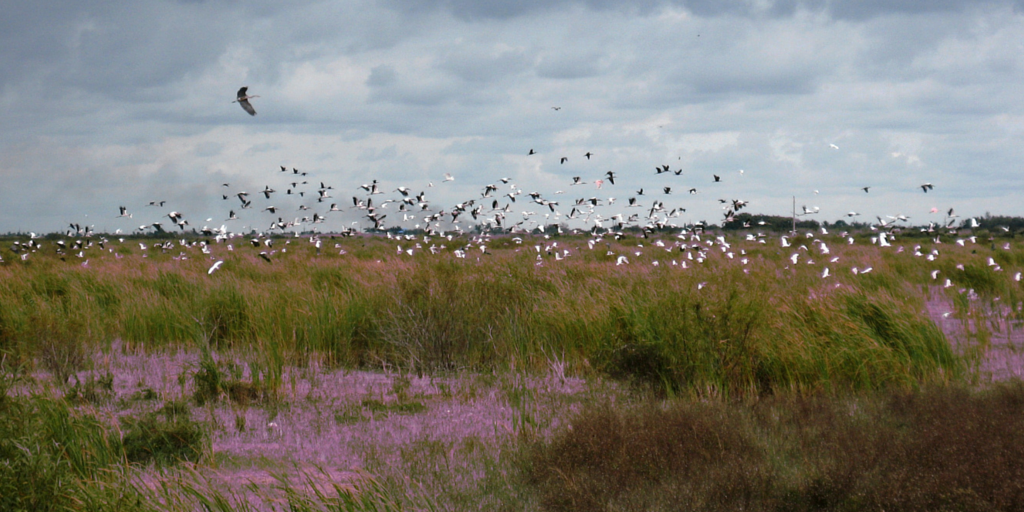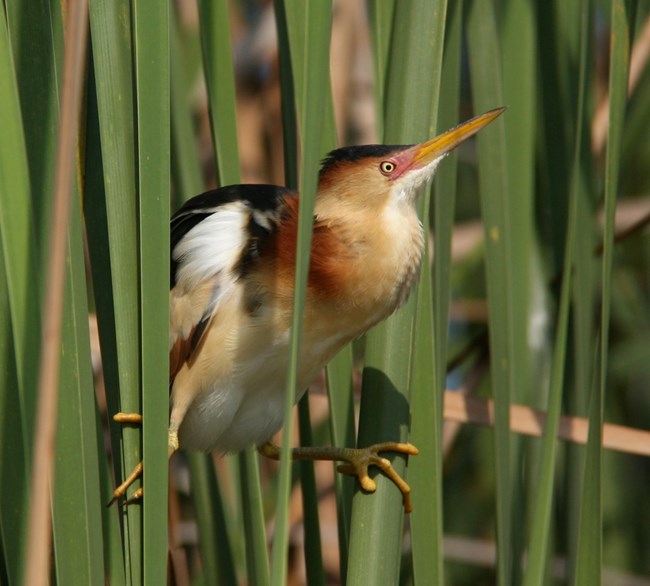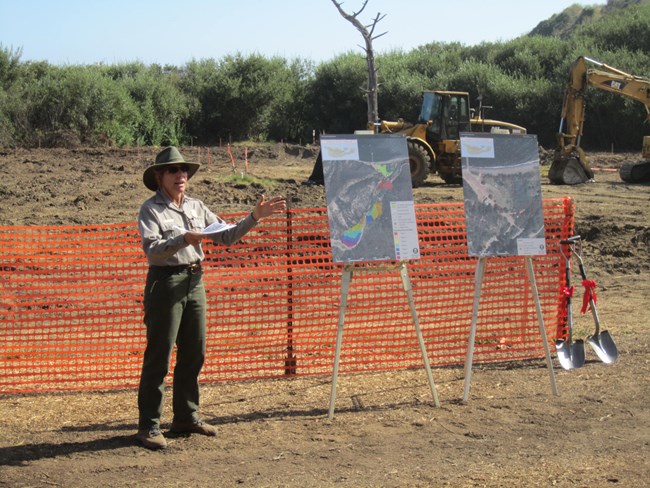Which Of The Following Is Not A Human Use Of Wetlands?
Why are Wetlands Important?

Wetlands are highly productive and biologically diverse systems that heighten water quality, control erosion, maintain stream flows, sequester carbon, and provide a home to at to the lowest degree 1 3rd of all threatened and endangered species.
Wetlands are of import because they:
- better water quality
- provide wildlife habitat
- maintain ecosystem productivity
- reduce coastal storm damage
- provide recreational opportunities
- improve the water supply
- provide opportunities for educational activity
Why Are Wetlands Important?
In the not too distant past, wetlands were regarded as wastelands. Virtually people felt that they were places to be avoided, and information technology was common do to bleed them, fill them or treat them every bit dumping grounds. A study published by the U.Southward. Fish and Wildlife Service in 1990 revealed a startling fact: more than half of the 221 million acres of wetlands that existed in the lower 48 states in the late 1700s have been destroyed.
Today, we know that wetlands provide many of import services to the environment and to the public. They offer disquisitional habitat for fish, waterfowl and other wildlife, they purify polluted waters, and they help cheque the subversive power of floods and storms. They also provide a wide variety of recreational opportunities such every bit line-fishing, hunting, photography, and wild animals ascertainment. Every bit these and many other wetland functions and values described beneath have become more than widely known, wetlands are increasingly seen every bit productive and valuable resources worthy of protection and restoration.
- Water Quality: Wetlands act equally natural h2o purifiers, filtering sediment and absorbing many pollutants in surface waters. In some wetland systems, this cleansing function also enhances the quality of groundwater supplies.
- Reduction of Coastal Storm Harm: Coastal wetlands help to blunt the force of major storms. For example, mangrove forests in southward Florida and table salt marshes along the Atlantic and Gulf Coasts reduce flooding, coastal erosion, and property damage during major storms.
- Flood Command and Streamflow Maintenance : Wetlands forth rivers and streams absorb free energy and store water during storms, which reduces downstream alluvion damage and lessens the risk of flash floods. The boring release of this stored water over fourth dimension can help keep streams flowing during periods of drought.
- Streambank Stabilization and Erosion Control: Wetland vegetation binds the soil on streambanks and riparian wetlands, preventing excessive erosion and sedimentation downstream.

Photo by Thom Curdts
- Wildlife Habitat: Wetlands provide habitat for many species of amphibians, reptiles, birds and mammals that are uniquely adjusted to aquatic environments. Upland wild animals like deer, elk and bears ordinarily use wetlands for food and shelter. Wetlands are particularly vital to many migratory bird species. For example, wood ducks, mallards, and sandhill cranes wintertime in flooded bottomland forests and marshes in the southern U.South., and prairie potholes provide convenance grounds for over 50% of N American waterfowl.
- Fish and Shellfish Habitat: Freshwater and marine life including trout, striped bass, pike, sunfish, crappie, crab, and shrimp rely on wetlands for food, embrace, spawning, and nursery grounds. Between 60% and ninety% of U.S. commercial fisheries depend on wetlands.
- Habitat for Threatened and Endangered Species: About one-tertiary of all plants and animals listed equally threatened or endangered species in the United States depend on wetlands for their survival, including whooping cranes, American crocodiles, the dwarf lake iris and several orchid species.
- Specialized Constitute Habitat: Nearly 7000 establish species live in U.South. wetlands, many of which tin merely survive in these wet environments.
- Ecosystem Productivity: Some wetland types are among the most productive ecosystems on earth. A stand up of cordgrass in a salt marsh tin produce more plant material and shop more than energy per acre than any agricultural crop except cultivated sugar cane. Nutrients and found material flushed from some wetland systems during storms provide essential food for plants, fish, and wildlife in estuaries and other downstream ecosystems.
- Recreational Opportunities: Many wetlands contain a diversity of plants, animals and water features that provide beautiful places for sightseeing, hiking, fishing, hunting, boating, bird watching, and photography.
- Water Supply: Some wetlands help provide make clean, plentiful water supplies. For example, wetlands in Florida's Everglades help recharge the Biscayne Aquifer, the sole source of drinking water for the Miami metropolitan area.

- Education: Ecological, cultural, and historic resource run arable in our nation'south wetlands, and provide countless opportunities for environmental education and public awareness programs.
Terminal updated: May 5, 2016
Which Of The Following Is Not A Human Use Of Wetlands?,
Source: https://www.nps.gov/subjects/wetlands/why.htm
Posted by: lovelandlosting.blogspot.com


0 Response to "Which Of The Following Is Not A Human Use Of Wetlands?"
Post a Comment